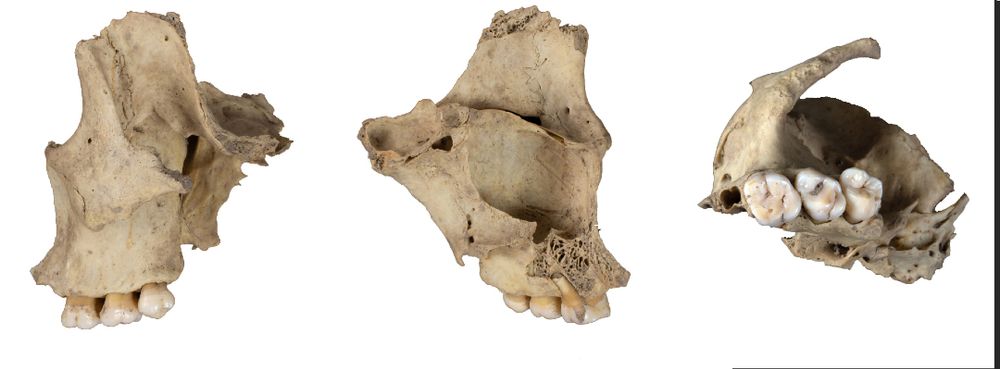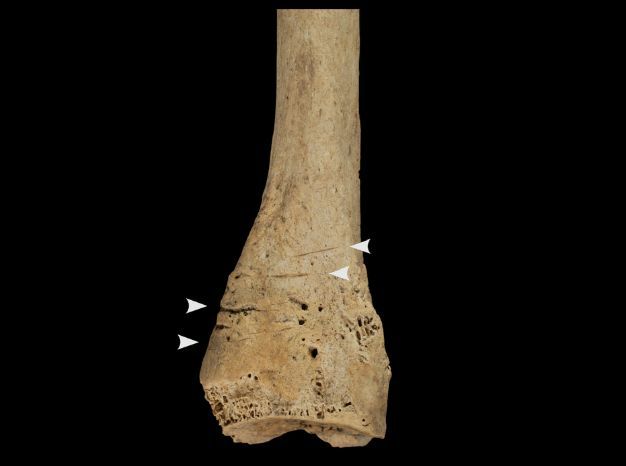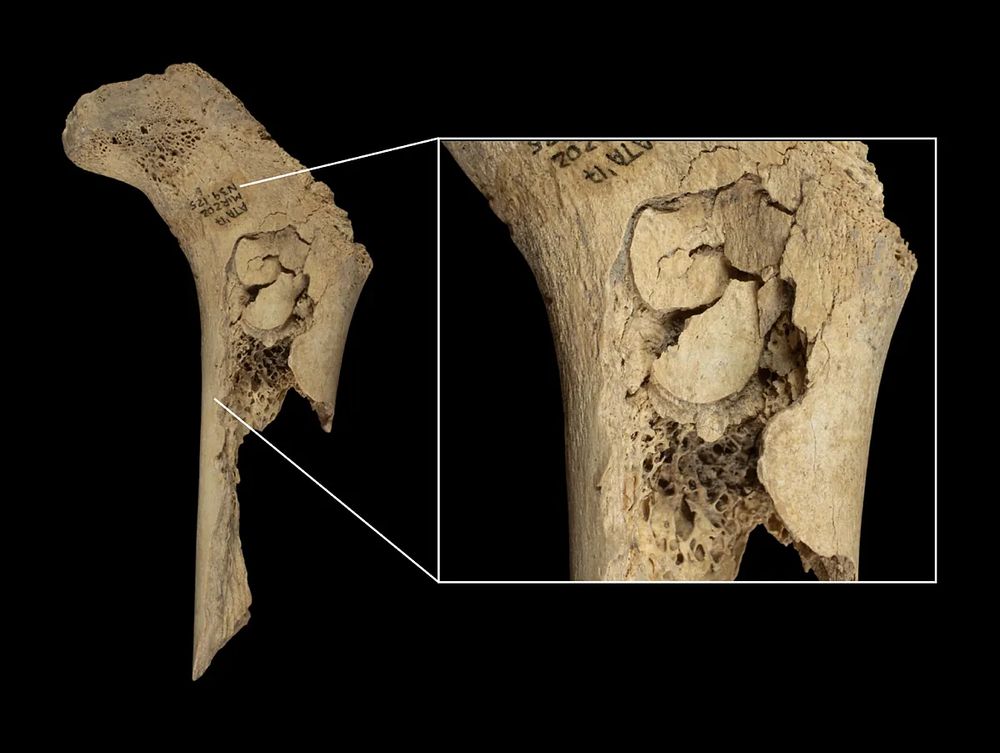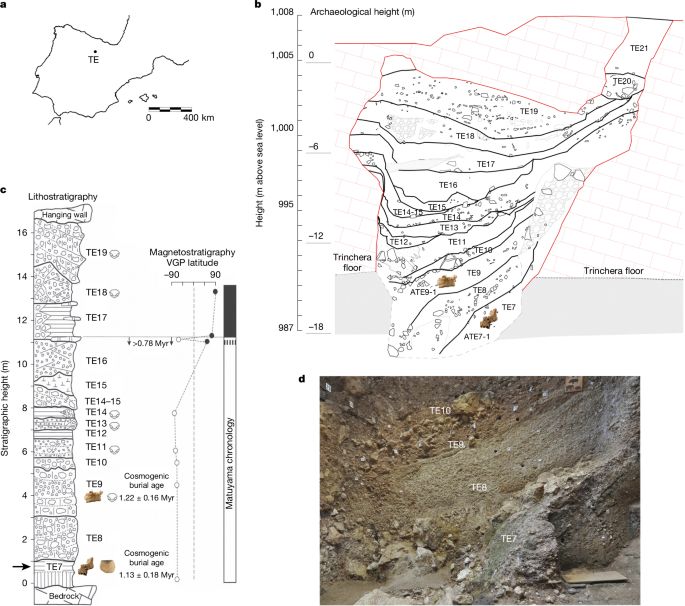Isturitz. Mandible cutmarked. 𝘏𝘰𝘮𝘰 𝘴𝘢𝘱𝘪𝘦𝘯𝘴. Upper Palaeolithic. Magdalenian. France #FossilFriday
Courtesy of Institut de Paléontologie Humaine (IPH), Paris.
@erc.europa.eu @cenieh.bsky.social #FECYT
03.10.2025 12:11 — 👍 3 🔁 2 💬 0 📌 0

Evidence of neolithic cannibalism among farming communities at El Mirador cave, Sierra de Atapuerca, Spain - Scientific Reports
Scientific Reports - Evidence of neolithic cannibalism among farming communities at El Mirador cave, Sierra de Atapuerca, Spain
Cannibalism in Neolithic Atapuerca? 💀🔬
Our latest study reveals clear evidence of a new cannibalistic event among farming communities at El Mirador cave. A fascinating glimpse into prehistoric life... and death. www.nature.com/articles/s41...
@palmirasaladie.bsky.social @whiterabbit36.bsky.social
07.08.2025 15:52 — 👍 5 🔁 1 💬 0 📌 0

New paper! 👇
#lithictechnology #oldowan #acheulean #lowerpaleolithic #earlypleistocene #humanevolution #humanfossils
@paleoxose.bsky.social
@iphes-cerca.bsky.social @urv.cat
22.07.2025 17:09 — 👍 11 🔁 4 💬 0 📌 0

Krapina 3 (Cranium C) partial cranium. 𝘏𝘰𝘮𝘰 𝘯𝘦𝘢𝘯𝘥𝘦𝘳𝘵𝘩𝘢𝘭𝘦𝘯𝘴𝘪𝘴. Croatia #FossilFriday
Courtesy of Osteological Collection of Comparative Anatomy (COAC) @cenieh.bsky.social
@erc.europa.eu #FECYT
06.06.2025 11:02 — 👍 11 🔁 5 💬 1 📌 0
😯 super congrats Laura!!! 👏🎊
28.05.2025 17:34 — 👍 1 🔁 0 💬 0 📌 0

New insights of cultural cannibalism amongst Magdalenian groups at Maszycka Cave, Poland - Scientific Reports
Scientific Reports - New insights of cultural cannibalism amongst Magdalenian groups at Maszycka Cave, Poland
Canibalismo hace 18 ka en cueva de Maszycka, Polonia. Posible selección de cráneos en el marco de enfrentamientos intergrupales, causados por la competencia por los recursos.
New insights of cultural cannibalism amongst Magdalenian groups at Maszycka Cave, Poland
15.04.2025 06:26 — 👍 2 🔁 2 💬 0 📌 0

Vamos a celebrar el 25 aniversario del IAM, un centro mixto del CSIC y la Junta de Extremadura dedicado exclusivamente a la arqueología en todas sus vertientes. #IAM25 @csic.es
24.03.2025 08:40 — 👍 11 🔁 3 💬 1 📌 0

Photo taken during the excavations of the mass grave
New discovery: In Vienna-Simmering, archaeologists have discovered a Roman mass grave that "indicates a catastrophic event" and may offer new insights into the founding history of the city.
www.vienna.at/sensational-...
and
wien.orf.at/stories/3297...
🏺 #archaeology
19.03.2025 20:16 — 👍 218 🔁 43 💬 0 📌 1
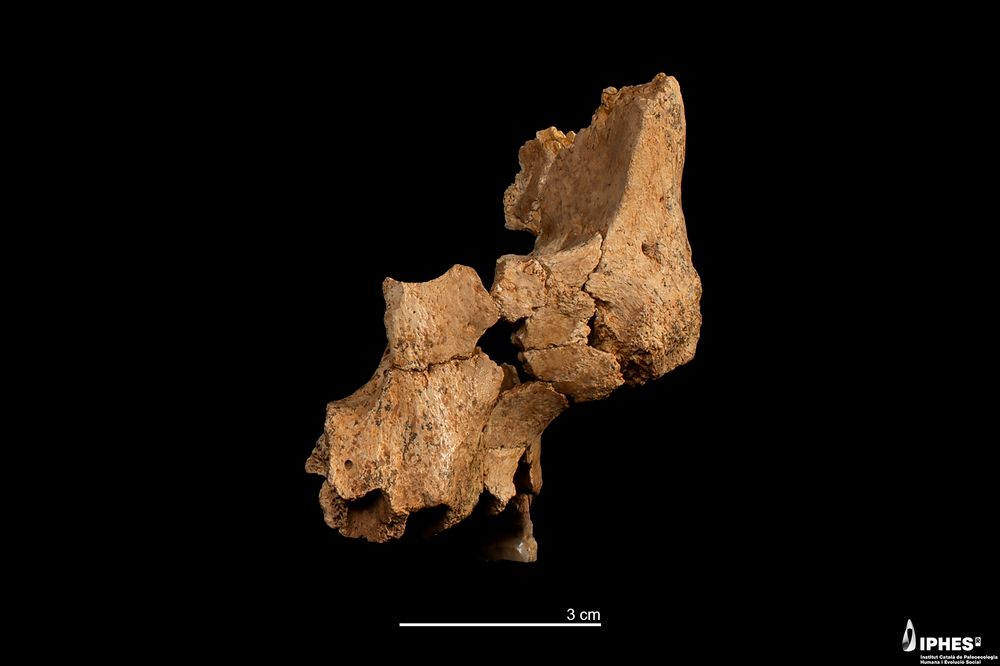

El estudio liderado por @iphes-cerca.bsky.social, en el que participa @juanmarin.bsky.social miembro del dpto., que atribuye un fragmento facial de 1.4 ma, hallado en la Sima del Elefante de Atapuerca, a la especie "Homo affinis erectus".
Fotografía María D. Guillén/ @iphes-cerca.bsky.social
13.03.2025 12:54 — 👍 5 🔁 4 💬 1 📌 0

Bone fragments of oldest known human face in western Europe found in Spain
Remains are of an adult member of an extinct species who lived up to 1.4m years ago, researchers say
New #HumanEvolution find from 🇪🇸 🦣🏺🧪Bone fragments of oldest known human face in western Europe found in Spain: www.theguardian.com/science/2025... congratulations to @whiterabbit36.bsky.social and all the other authors.
12.03.2025 21:13 — 👍 16 🔁 4 💬 0 📌 1
👨👩👦👦 Atapuerca reescribe la historia del primer poblamiento europeo
🦴Un estudio del @iphes-cerca.bsky.social, en el que participan dos institutos del #CSIC, atribuye un fragmento facial hallado en #Atapuerca a la especie ‘Homo affinis erectus’
👉http://tiny.cc/vg2d001
🎥 Antonio Rodríguez (#IAM_CSIC)👇
12.03.2025 16:08 — 👍 71 🔁 31 💬 0 📌 2

The Lapedo Child: A 28,000-Year-Old Mystery Reshaped by Science
New dating techniques reveal fresh insights into one of the most enigmatic burials in human prehistory
New dating confirms the Lapedo Child as a 28,000-year-old Neanderthal-human hybrid, refining its timeline and burial context. The study highlights interbreeding and advances radiocarbon methods. @science.org
#LapedoChild #Neanderthals #HumanEvolution #Paleoanthropology #AncientDNA #Archaeology
08.03.2025 02:43 — 👍 14 🔁 5 💬 2 📌 1

Come to Sweden! Funded digital heritage PhD alert!
Come and work with us on Gotland. We have two fully funded 4-year PhD projects in Archaeology and Conservation (Heritage Science). Join the team (and me) focussing on Digital Innovations for Sustainable Heritage. Details below...
08.03.2025 03:03 — 👍 79 🔁 43 💬 3 📌 8


We are at full capacity, adding new skeletons to the @iphes-cerca.bsky.social COR collection!
Our latest additions include:
•Equus quagga
•Tapirus terrestris
•Marmota marmota
•Bubo bubo
•Larus michahellis
•Egretta garzetta
•Circus aeruginosus
Stay tuned for more updates!!!
06.03.2025 20:49 — 👍 19 🔁 5 💬 1 📌 0
Moltes felicitats! Gaudeix del dia!! 🎊🎉🍻
02.03.2025 07:06 — 👍 1 🔁 0 💬 1 📌 0

A close-up photograph of an flint dagger with a chipped, gray stone blade and a weathered wooden handle. The blade is knapped to a sharp point with visible flake scars, while the handle appears aged, the black birch tar, that was used to fasten the blade to the handle, can be seen.
This uniquely preserved Late Neolithic flint dagger (2900 BCE) was found in Allensbach at the Lake Constance, southwest #Germany. The blade was made of flint from Monte Baldo, northern #Italy. It was fastened with birch tar in a handle made of elderwood.
📷 @almbawue.bsky.social
🏺 #archaeology
28.02.2025 11:59 — 👍 513 🔁 105 💬 9 📌 11

⛰️ Nuevos hallazgos indican que el canibalismo era una práctica habitual hace 18.000 años
Un estudio con participación del #CSIC muestra nuevas prácticas de canibalismo cultural durante el periodo magdaleniense tras analizar restos óseos hallados en una cueva de Polonia
👉 http://tiny.cc/5cha001
19.02.2025 10:09 — 👍 24 🔁 5 💬 0 📌 3

Our paper has reached 10k access in just 10 days!!! rdcu.be/eaePJ
17.02.2025 20:16 — 👍 14 🔁 3 💬 1 📌 1

This is figure 5, which shows human induced modifications on cranial and postcranial remains.
A study in Scientific Reports of remains from the Maszycka Cave from 18,000 years ago finds evidence of cannibalism among these Magdalenian groups. https://go.nature.com/4hwUqAQ 🧪 🏺
13.02.2025 23:32 — 👍 42 🔁 10 💬 3 📌 1

In a cave in Poland, signs of prehistoric cannibalism
Practice may reflect violent competition for new territory 18,000 years ago
Guess who's coming to dinner…
New evidence for #Magdalenian #cannibalism from #MaszyckaCave near Kraków, 18,000 years ago:
🏺 www.science.org/content/arti... by @spoke32.bsky.social via @science.org
💀 CN: Couple gruesome details on, well, human consumption.
11.02.2025 19:07 — 👍 49 🔁 11 💬 2 📌 0
Dr in Prehistoric Archaeology 💀
Paleoanthropologist
Tooth size, wear and topography🦷
Human evolution 🐒.
📍University of Barcelona
Associate Prof, U. New Orleans EES/CEE. Sedimentologist, cyclist, runner, potter. Born at 348 ppm CO2. PhD UWyo, MS Idaho State, BS UMontana. PG (LA). he/him. Pro Choice. Pro DEIA. Pro Democracy. Anti-fascist. Views mine 🏳️🌈
Postdoctoral researcher | Conservation of archaeological bone 🦴✍🏼
📍Galicia
Professor of Evolutionary Biology at Anglia Ruskin University, Cambridge.
www.thepeergroup.org.uk
PEER Group research is focused on primate evolution and ecology, with a particular emphasis on vocal communication and the evolution of language.
Doctoral Researcher in Archaeological Sciences at @univie.ac.at -
Department of Evolutionary Anthropology. Exploring Late Neanderthal sites in the Palaeolithic - Radiocarbon dating, Paleoproteomics, Stable Isotopes. Yorkshire lass in Vienna.
Researcher in archaeological science interested in radiocarbon dating, stable isotope analysis and palaeoproteomics
PhD student
Exploring the origins of violence in the fossil record
Palaeoanthropologist, Medical and Forensic Anthropologist, CENIEH Director, Atapuerca Research Team, UCL Honorary Professor.
#Homoimperfectus (Ed. Destino)
Reader at Kings, NMES, inaugural member of the UKYoungAcademy. Anthroengineer, prosthetics, biomech, paleoanth, weird bones. Swimmer, cats. Bi and proud 🏳️🌈. Twitter: MBerthaume. he/him
News from the #Paleoanthropology 🦴🦷⚒️ lab at the University of Tübingen 🎓 & Senckenberg 🌍
Posting the latest discoveries in human evolution and primatology. We also spotlight the broader field of biological anthropology—from the history of our discipline to talks, conferences, and job opportunities.
Professor of Anthropology at Washington State University. Faculty page: https://anthro.vancouver.wsu.edu/people/hagen/
Views expressed are my own and do not reflect those of my employer or other organizations I'm affiliated with.
Palaeoproteomics Researcher at CENIEH
🧪👩🔬🦴🦷🌏
Building a brand new #palaeoproteomics laboratory here in Burgos, Spain. Exciting new things on the horizon!
#archaeology #evolution #palaeolithic #ZooMS #proteins
Researcher in paleoclimatology, paleoecology and vertebrate palaeontology #GIS #ENMs
#Archaeologist🏺, got a hat (no whip though). Once known as "Yunus" among Bedouins. Demanding a revival of the venerable profession of the #ExpeditionPainter👨🎨.
🔗 jensnotroff.com
🔗 trowelandpen.com
Funded by the European Research Council (No. 949330). In collaboration with the FECYT– Ministerio de Ciencia, Innovación y Universidades
https://anthropology.net https://sciences.social/@anthropology
#anthropology #archaeology #humanevolution #paleoanthropology #culture
European Research Council, set up by the EU, funds top researchers of any nationality, helping them pursue great ideas at the frontiers of knowledge. #HorizonEU
PhD at IPHES | Prehistory | Stable isotopes & Tooth wear | Biomarkers_Lab | palaeodiet, palaeoclimate, palaeoecology 👨🏽🔬🔬🐻

